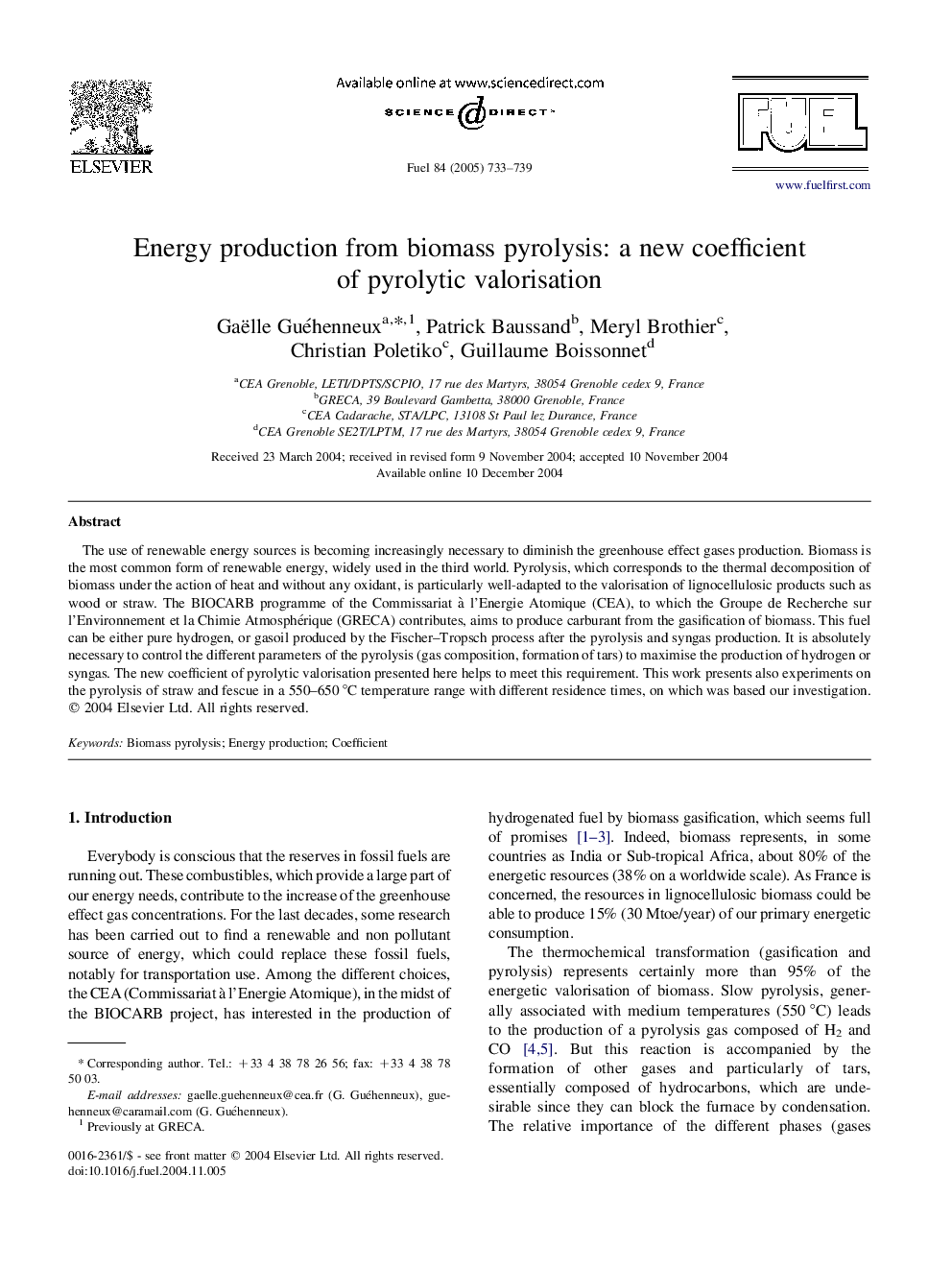| Article ID | Journal | Published Year | Pages | File Type |
|---|---|---|---|---|
| 10273777 | Fuel | 2005 | 7 Pages |
Abstract
The use of renewable energy sources is becoming increasingly necessary to diminish the greenhouse effect gases production. Biomass is the most common form of renewable energy, widely used in the third world. Pyrolysis, which corresponds to the thermal decomposition of biomass under the action of heat and without any oxidant, is particularly well-adapted to the valorisation of lignocellulosic products such as wood or straw. The BIOCARB programme of the Commissariat à l'Energie Atomique (CEA), to which the Groupe de Recherche sur l'Environnement et la Chimie Atmosphérique (GRECA) contributes, aims to produce carburant from the gasification of biomass. This fuel can be either pure hydrogen, or gasoil produced by the Fischer-Tropsch process after the pyrolysis and syngas production. It is absolutely necessary to control the different parameters of the pyrolysis (gas composition, formation of tars) to maximise the production of hydrogen or syngas. The new coefficient of pyrolytic valorisation presented here helps to meet this requirement. This work presents also experiments on the pyrolysis of straw and fescue in a 550-650 °C temperature range with different residence times, on which was based our investigation.
Related Topics
Physical Sciences and Engineering
Chemical Engineering
Chemical Engineering (General)
Authors
Gaëlle Guéhenneux, Patrick Baussand, Meryl Brothier, Christian Poletiko, Guillaume Boissonnet,
